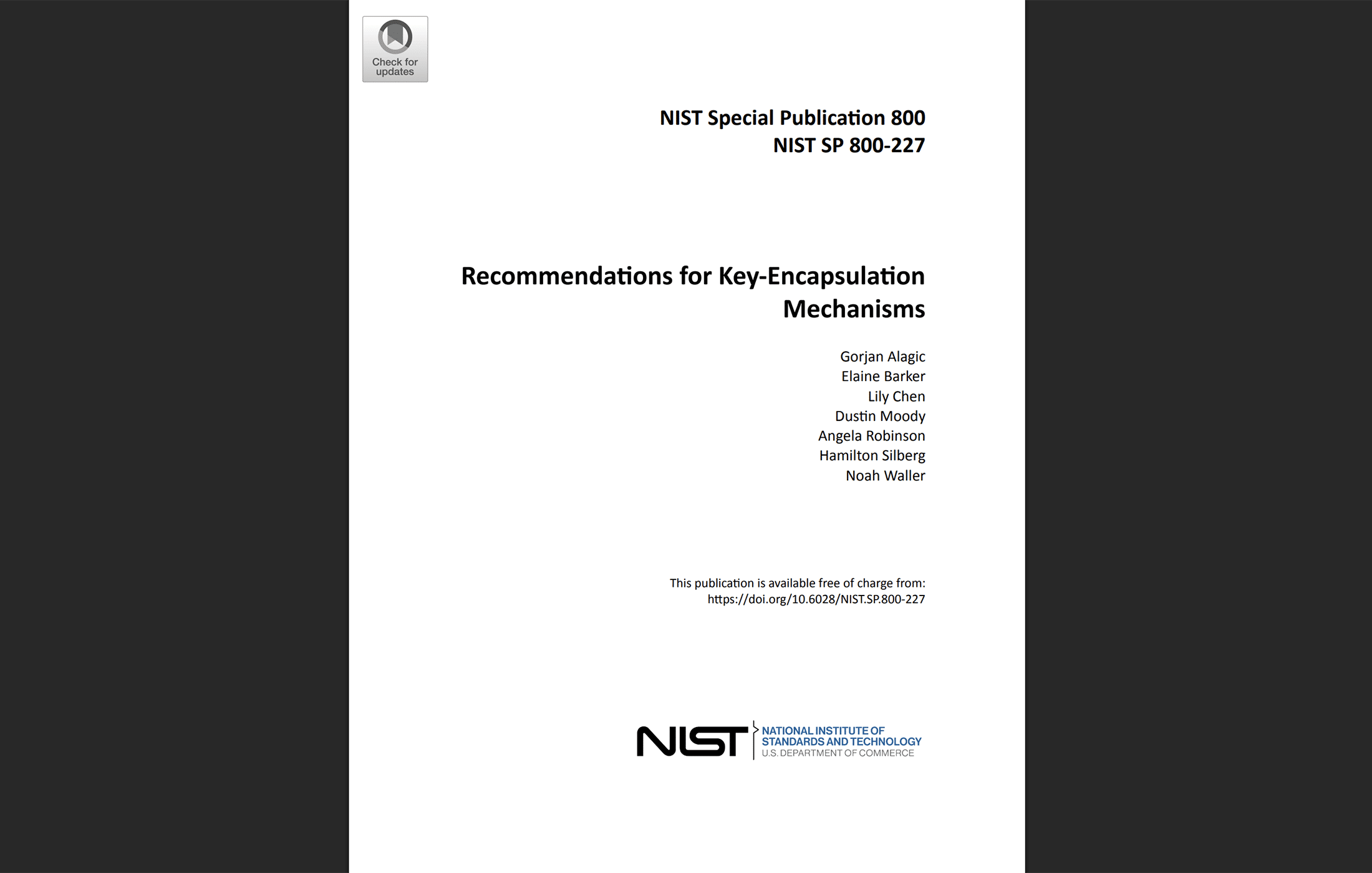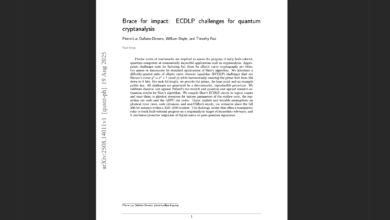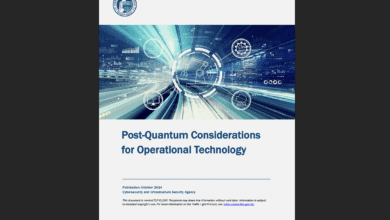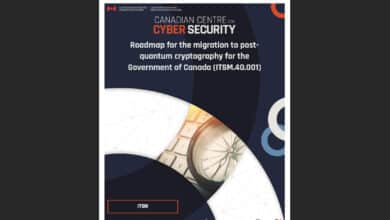NIST Releases NIST SP 800-227 Recommendations for Key-Encapsulation Mechanisms

Sep 2025 – NIST has just released SP 800-227 “Recommendations for Key-Encapsulation Mechanisms”. This new SP 800-227 is a critical piece in NIST’s post-quantum cryptography (PQC) effort, filling in the operational guidance that complements the PQC algorithms being standardized.
I reviewed the release of the initial public draft in January, but lots of good comments were raised [PDF] during the public consultations in the meantime. Now that the document is finalized, we have a comprehensive playbook on how to implement and use key-encapsulation mechanisms (KEMs) securely – a milestone that will help practitioners and policymakers confidently deploy post-quantum key exchange mechanisms like the lattice-based ML-KEM (standardized as FIPS 203).
SP 800-227 in Context: Guiding PQC KEM Deployment
NIST’s PQC standardization program isn’t just about picking algorithms – it’s also about ensuring those algorithms can be safely used in practice. SP 800-227 sits alongside the algorithm standards (like FIPS 203 for ML-KEM) and provides the operational guidance that implementers need for using KEMs in real-world protocols.
KEMs are a relatively new primitive in NIST’s portfolio, distinct from traditional Diffie-Hellman or RSA key exchanges, so this guidance fills an important gap. As NIST puts it, the publication “describes the basic definitions, properties, and applications of KEMs and provides recommendations for implementing and using KEMs in a secure manner.” In other words, SP 800-227 is the handbook for how to properly establish shared keys with KEM algorithms under various conditions.
The timing is notable: NIST has already standardized one post-quantum KEM (the module-lattice-based ML-KEM, essentially the Kyber algorithm, believed secure against quantum adversaries), and plans to select additional KEMs in the near future. SP 800-227 gives us a framework that applies to any KEM – present or future, post-quantum or traditional – to ensure they’re integrated securely. This includes guidance on how to handle keys, how to combine multiple algorithms if needed, and how to confirm that both parties derived the same secret.
For organizations starting their cryptographic migration (e.g. updating TLS, VPN, or messaging protocols to be quantum-resistant), SP 800-227 is an essential reference. It essentially distills lessons from decades of key management (e.g. NIST’s earlier SP 800-56 series on key agreement) and adapts them to the KEM context, which is crucial for building quantum-resistant systems correctly on the first try.
What Does SP 800-227 Cover? Key Definitions and Recommendations
SP 800-227 is broad in scope, but let’s break down its key content areas:
KEM Basics and Definitions
The document starts by defining what a KEM is and the roles of its algorithms (KeyGen, Encaps, Decaps). A KEM allows two parties to securely establish a shared secret over a public channel. The text clarifies how a shared secret from a KEM can then be used with symmetric cryptography for encryption or authentication, analogous to how a Diffie-Hellman shared secret might be used.
It also introduces KEM-specific terminology – for example, distinguishing an encapsulation key (the public key used to encapsulate a secret) from a decapsulation key (the private key used to recover it), and defines security properties like IND-CPA and IND-CCA in the KEM context.
These foundational definitions ensure everyone has a common language for KEM-based schemes.
Implementation Guidance and Requirements
A substantial portion of SP 800-227 provides practical guidance for implementers. This includes normative requirements (denoted by “shall” or “shall not”) to enforce best practices.
For instance, it requires zeroizing sensitive intermediate values during KEM operations (so no leftover secrets in memory). It also addresses cryptographic module implementation, advising that devices running KEM algorithms and storing keys must be appropriately secured and tamper-resistant.
One important new requirement: If an application uses an ephemeral KEM key pair, that key pair shall be used for only one key-establishment transaction and then destroyed. This ensures forward secrecy – a principle carried over from classic ephemeral Diffie-Hellman – is truly upheld in KEM deployments. (Notably, the initial draft had allowed the notion of an “ephemeral” key used for multiple connections over a short period, which many cryptographers argued is a dangerous practice. The final SP 800-227 rectifies this, drawing a bright line between static keys – which can be reused – and ephemeral keys – which must be one-and-done.)
Static vs. Ephemeral Key Usage
SP 800-227 clearly delineates two operational modes for KEM key pairs.
A static KEM key pair is one that a party (say, a server) uses across many sessions – analogous to a long-term key, typically accompanied by a certificate binding it to that party’s identity.
An ephemeral KEM key pair, by contrast, is generated fresh to establish a single session and then discarded, providing strong forward secrecy. This concept was refined in the final document due to feedback: earlier drafts blurred the lines by suggesting an “ephemeral” key could be reused briefly, but the final guidance removes that ambiguity. The new rule (Requirement RS6) explicitly states one-time use for ephemeral keys, aligning with what practitioners expect – if a key is labeled “ephemeral,” it won’t live beyond its one handshake. This change was driven home by public comments; one expert emphatically recommended that “an ephemeral private key shall be used in exactly one key-establishment transaction”, warning that reusing an ephemeral key for different connections undermines security. NIST heeded this advice, so implementers now have unambiguous instructions: never reuse ephemeral KEM key pairs.
Hybrid and Multi-Algorithm KEM Constructions
Post-quantum migration often calls for “hybrid” approaches – combining a traditional algorithm with a PQC algorithm – to hedge against unknown vulnerabilities. SP 800-227 devotes a section (4.6) to Multi-Algorithm KEMs and PQ/T Hybrids. It explains how combining multiple key-establishment schemes into one can enhance security (for example, using both a post-quantum KEM and classical ECDH in tandem).
The publication introduces the notion of a composite KEM and provides an example called “X-Wing KEM,” a hybrid that pairs ML-KEM (a lattice-based PQC KEM) with X25519 (a well-known classical Diffie-Hellman mechanism).
The general guidance is that a well-designed hybrid should remain secure as long as at least one of the component algorithms remains secure. SP 800-227 outlines how to construct such composite schemes: essentially, run each component KEM in parallel and then combine their outputs into a single shared secret using an approved key combiner.
The final document even references ongoing IETF work on hybrid terminology and standards, ensuring NIST’s guidance aligns with industry discussions.
For implementers, this section is crucial – it provides a blueprint for building hybrid solutions (e.g., how to concatenate or hash multiple shared secrets correctly, how to choose independent randomness for each KEM, etc.) without accidentally weakening the security.
One subtle but important refinement that came from public input: the method for concatenating secrets in a combiner was adjusted to include explicit separation (a delimiter) between inputs, because commenters noted that naive concatenation could be problematic in some contexts.
In short, SP 800-227 encourages hybrid KEM deployments during the PQC transition and gives clear technical guidance on doing it right (with the example of X25519+ML-KEM as a likely practical combination).
Key Confirmation and Proof of Possession
A unique aspect of KEM-based key exchange is that one party (the encapsulator) chooses the secret and the other party derives it. This one-sided process raises the question: how do you know the other party actually obtained the same key? Enter key confirmation. SP 800-227 provides a detailed treatment of key confirmation mechanisms (Section 4.4), which are essentially extra handshake steps to prove both sides share the same keying material.
The guidance strongly recommends using key confirmation in KEM usage, noting that “Key confirmation should be used during KEM usage, as it may enhance the security properties of the overall key-establishment process.” By confirming the shared secret, parties can catch any transmission errors or active attacks early, and it also provides a form of proof-of-possession of the secret.
The document describes how key confirmation can be integrated either implicitly (for example, in TLS 1.3 the handshake MAC serves this purpose) or via an explicit exchange of MAC tags on some known data.
When an explicit key confirmation step is used, SP 800-227 mandates certain best practices: use a fresh nonce of adequate length if needed, derive a dedicated key-confirmation key from the shared secret, use an approved MAC algorithm (e.g. HMAC, KMAC, CMAC) with sufficient strength, and never reuse the confirmation key for other purposes (and destroy it after use). In fact, the final draft added specificity here in response to comments. One commenter from industry pointed out that AES-GMAC (the GMAC mode of AES) was absent from the draft’s list of approved MACs and suggested it be allowed. NIST agreed – the final SP 800-227 explicitly mentions AES-GMAC as an approved option for key confirmation MACs.
The document also clarifies in more detail what properties key confirmation provides and what it doesn’t. For example, it explains that while key confirmation bolsters confidence in the shared key, it is not a substitute for authentication of identity – those are separate layers. This nuance was in part a response to academic feedback on the draft: cryptographers like Cas Cremers analyzed certain attack scenarios on the draft’s examples and highlighted that an attacker who manages to impersonate a party could potentially fool a simple key confirmation exchange. The final text responds by carefully explaining the role of key confirmation and even noting that some protocols might integrate it into other steps (the document gives TLS as an example where the Finished message implicitly confirms the key).
All of this is invaluable to practitioners – it tells you when to include an extra round-trip for confirmation and how to do it in a secure way, should your application require it.
Use Cases and Examples
To ground all these concepts, SP 800-227 provides practical examples of how KEMs can be used in real-world protocol patterns. Section 5 walks through sample key-establishment flows: a basic unauthenticated KEM exchange (essentially like a simplified TLS 1.3 handshake using KEM), an example of static-ephemeral KEM usage for unilateral authentication (e.g. a server has a static KEM key certified, the client uses an ephemeral key) , and an ephemeral-ephemeral authenticated scenario (where both sides use ephemeral KEM keys but also have an external authentication mechanism, akin to how one might do a mutually authenticated handshake).
These examples include figures that illustrate the message flows and how keys are generated, shared, and confirmed. They also emphasize requirements like ensuring the static party’s public key is tied to an identity (usually via a certificate). In fact, SP 800-227 explicitly states that if you’re using someone’s static public key for a KEM, you must have assurance of that party’s ownership of the key (for example, by validating a certificate or a proof-of-possession). This is a vital point for policymakers and system designers: KEMs don’t magically solve authentication, so traditional public key infrastructure (PKI) or other authentication methods are still needed to avoid impersonation. By including these examples and requirements, the document ensures readers understand not just the cryptographic algorithms, but the surrounding infrastructure and protocol logic required to use them safely.
In summary, the final SP 800-227 serves as a one-stop resource covering everything from definitions and algorithm properties to implementation must-dos and protocol-level usage of KEMs. It’s written for a technically sophisticated audience, and it doesn’t shy away from detail – there are even appendices on approved combiners and an analysis of security strengths. But it’s also structured in a way that different stakeholders can find what they need: e.g., a developer can check the requirements section to make sure their KEM library meets all “shall” statements, a protocol designer can consult the hybrid and key confirmation sections when building a new PQC handshake, and a policymaker can extract high-level recommendations (like “use key confirmation for added safety” or “don’t reuse ephemeral keys”) to incorporate into compliance checklists.
Implications for Practitioners and Policymakers
With SP 800-227 finalized, organizations now have a go-to reference for deploying KEMs, which is especially timely as PQC algorithms begin to make their way into products and standards. Here are a few key takeaways and implications:
Practitioners (Implementers & Developers)
If you’re implementing a post-quantum key exchange (say, adding Kyber/ML-KEM to your TLS library or VPN product), SP 800-227 is essentially your checklist for do’s and don’ts.
Many of its requirements read like secure coding best practices: use approved parameter sets of appropriate strength, don’t reuse keys in unintended ways, erase secrets from memory promptly, and so on.
It also gives you design patterns for more complex needs like hybrid key exchange or explicit key confirmation, which can save you from designing these mechanisms from scratch (or getting them wrong).
The guidance on hybrid KEMs is immediately useful – for instance, if you plan to implement a dual-KEM mode (classical+PQ), the document tells you to combine the two shared secrets using an approved method (e.g. a hash-based combiner) and even provides references and reasoning. By following SP 800-227, implementers can ensure they haven’t overlooked a critical security consideration; it’s much easier to justify your design decisions when you can point to NIST’s recommendations as a foundation.
Additionally, those seeking FIPS 140-validated solutions will likely need to adhere to these recommendations. We might expect testing labs and certification bodies to start looking for compliance with SP 800-227’s guidance (even though it’s not a FIPS standard, NIST Special Pubs often inform validation criteria). For example, a crypto module that implements ML-KEM might be expected to show that it destroys ephemeral keys after use or that it can perform the key confirmation procedure correctly using approved algorithms.
Protocol Designers and Architects
If you’re working at a higher architectural level – designing the next generation of secure communication protocols or updating existing ones for PQC – SP 800-227 provides a common framework that can help ensure interoperability and security.
The document’s explicit differentiation of static vs. ephemeral KEM usage means protocols can be designed with clear roles (e.g. a server might hold a static KEM key in its certificate, while clients use ephemeral keys per session, to mirror the typical client-server auth model).
The recommendations on key confirmation can influence protocol message flows (e.g. deciding to include an extra message if needed to confirm the shared key, or relying on an existing mechanism like an encrypted Finished message).
Also, the hybrid KEM guidance in SP 800-227 gives architects confidence that combining algorithms is sound if done in the recommended way – this could accelerate the adoption of hybrid key exchange in protocols like TLS, IPsec, or QUIC, as NIST has effectively blessed certain approaches (concatenate-then-KDF being a primary one, with the stipulation of using a secure combiner function).
For those designing systems that must remain secure against quantum attackers and comply with government standards, SP 800-227 now serves as a crucial design reference to cite. We’re likely to see future protocol standards (both in IETF and industry consortia) referencing SP 800-227 for guidance on PQC key establishment.
Policymakers and CISOs
From a policy perspective, SP 800-227 will shape cryptographic requirements in government and industry. Many organizations follow NIST guidance as a baseline for cryptography. Now that we have this publication, expect to see references to it in procurement requirements, security guidelines, and risk management frameworks (e.g., “Cryptographic implementations should adhere to NIST SP 800-227 for any use of key-encapsulation mechanisms.”). For government agencies under FISMA or contractors under FedRAMP, this kind of language gives a clear mandate on how to achieve quantum-resistant key establishment in a way that’s consistent and vetted.
Policymakers focused on national security or cybersecurity strategy will appreciate certain emphases in SP 800-227 – for example, the insistence on authentication of static keys and single-use ephemeral keys aligns with principles of zero trust and forward secrecy. They can be confident that if systems follow this guidance, the chances of known pitfalls (like impersonation due to an unverified public key, or multi-session key compromise due to key reuse) are greatly reduced.
Additionally, the document’s stance on hybrid key exchanges – essentially endorsing them during the PQC transition – provides a green light for policies that encourage hybrid deployments in the next few years. One could imagine, for instance, government directives saying: “When deploying post-quantum cryptography prior to the full deprecation of classical algorithms, use hybrid key establishment (as described in NIST SP 800-227) to guard against potential weaknesses in either algorithm.” Having NIST’s detailed recommendations makes it easier to craft such policies with technical accuracy. Finally, SP 800-227 will likely inform future updates of regulations and standards (e.g., an upcoming revision of NIST SP 800-131A, which lists approved algorithms and key management practices, could integrate concepts from 800-227 to officially allow or require certain KEM usage modes).
In conclusion, the final release of SP 800-227 is a major milestone in the journey toward quantum-safe cryptography. It provides a much-needed bridge between the theoretical security of PQC algorithms and the practical realities of deployment. As someone who has followed this space closely, I find the document to be technically sound and pleasantly comprehensive – it reflects many of the community’s concerns and hard-won insights.
Of course, no document is perfect or frozen in time. We can anticipate that SP 800-227 might be updated as we learn more (for example, if new KEMs are standardized or if real-world implementations uncover additional considerations). But as of now, this final version offers a strong foundation for anyone implementing KEMs.
Quantum Upside & Quantum Risk - Handled
My company - Applied Quantum - helps governments, enterprises, and investors prepare for both the upside and the risk of quantum technologies. We deliver concise board and investor briefings; demystify quantum computing, sensing, and communications; craft national and corporate strategies to capture advantage; and turn plans into delivery. We help you mitigate the cquantum risk by executing crypto‑inventory, crypto‑agility implementation, PQC migration, and broader defenses against the quantum threat. We run vendor due diligence, proof‑of‑value pilots, standards and policy alignment, workforce training, and procurement support, then oversee implementation across your organization. Contact me if you want help.



